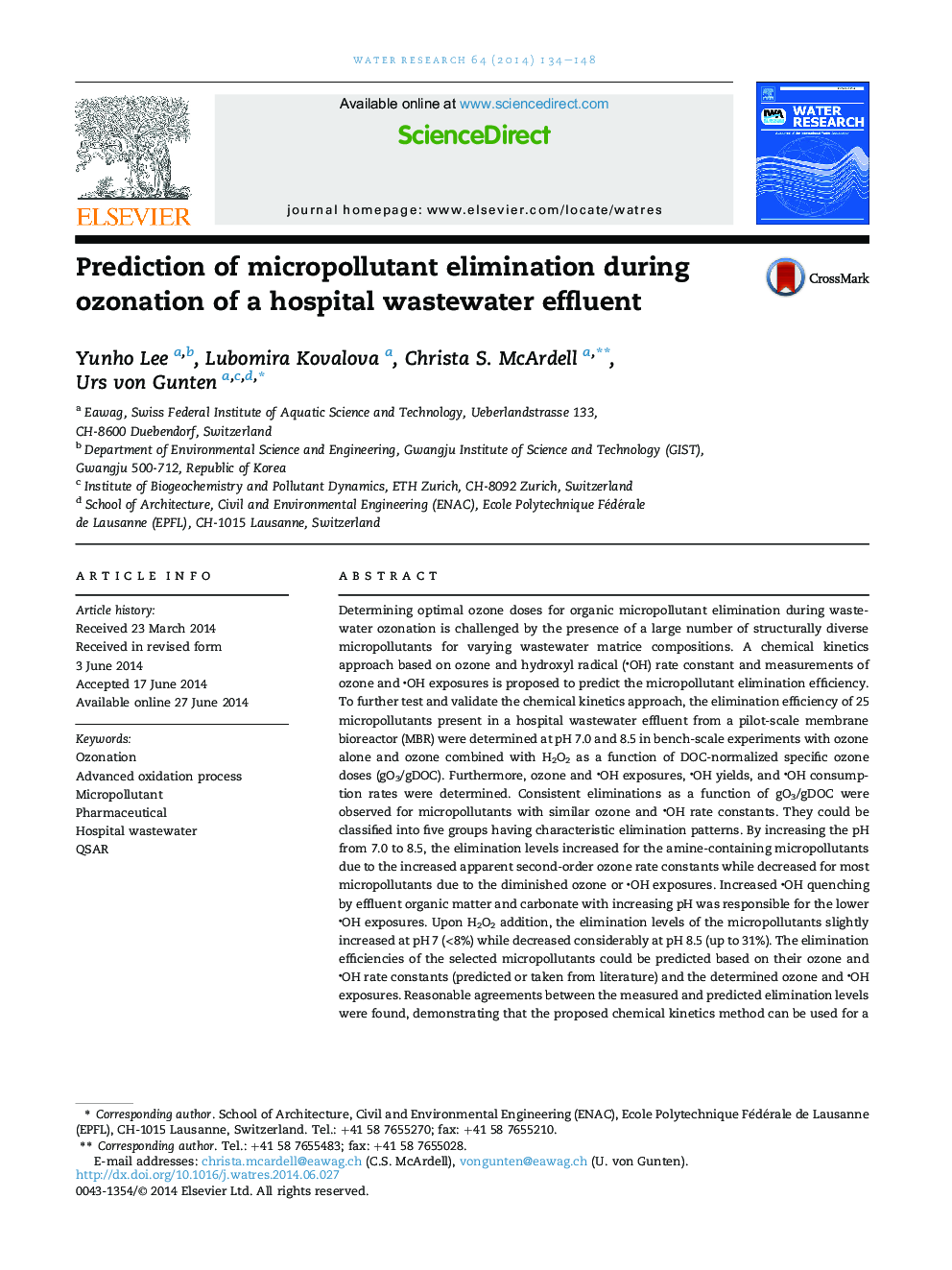| کد مقاله | کد نشریه | سال انتشار | مقاله انگلیسی | نسخه تمام متن |
|---|---|---|---|---|
| 4481437 | 1623104 | 2014 | 15 صفحه PDF | دانلود رایگان |
• Elimination of micropollutants in hospital wastewater ozonation was well predicted.
• O3 and OH rate constants could be predicted by QSARs and the group contribution method.
• O3 and OH exposures could be measured using O3- and OH-probe compounds.
• Most micropollutants in hospital wastewater effluent could be efficiently eliminated.
Determining optimal ozone doses for organic micropollutant elimination during wastewater ozonation is challenged by the presence of a large number of structurally diverse micropollutants for varying wastewater matrice compositions. A chemical kinetics approach based on ozone and hydroxyl radical (OH) rate constant and measurements of ozone and OH exposures is proposed to predict the micropollutant elimination efficiency. To further test and validate the chemical kinetics approach, the elimination efficiency of 25 micropollutants present in a hospital wastewater effluent from a pilot-scale membrane bioreactor (MBR) were determined at pH 7.0 and 8.5 in bench-scale experiments with ozone alone and ozone combined with H2O2 as a function of DOC-normalized specific ozone doses (gO3/gDOC). Furthermore, ozone and OH exposures, OH yields, and OH consumption rates were determined. Consistent eliminations as a function of gO3/gDOC were observed for micropollutants with similar ozone and OH rate constants. They could be classified into five groups having characteristic elimination patterns. By increasing the pH from 7.0 to 8.5, the elimination levels increased for the amine-containing micropollutants due to the increased apparent second-order ozone rate constants while decreased for most micropollutants due to the diminished ozone or OH exposures. Increased OH quenching by effluent organic matter and carbonate with increasing pH was responsible for the lower OH exposures. Upon H2O2 addition, the elimination levels of the micropollutants slightly increased at pH 7 (<8%) while decreased considerably at pH 8.5 (up to 31%). The elimination efficiencies of the selected micropollutants could be predicted based on their ozone and OH rate constants (predicted or taken from literature) and the determined ozone and OH exposures. Reasonable agreements between the measured and predicted elimination levels were found, demonstrating that the proposed chemical kinetics method can be used for a generalized prediction of micropollutant elimination during wastewater ozonation. Out of 67 analyzed micropollutants, 56 were present in the tested hospital wastewater effluent. Two-thirds of the present micropollutants were found to be ozone-reactive and efficiently eliminated at low ozone doses (e.g., >80% for gO3/gDOC = 0.5).
Figure optionsDownload high-quality image (163 K)Download as PowerPoint slide
Journal: Water Research - Volume 64, 1 November 2014, Pages 134–148
